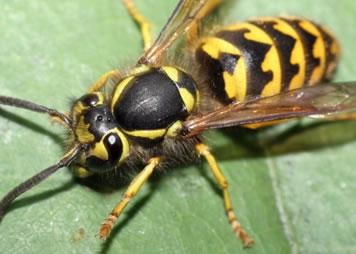How to Keep Wasps at Bay
Designing an Outdoor Oasis Without the Buzz: How to Keep Wasps at Bay
Many homeowners dream of creating the perfect outdoor oasis. Whether you envision summer barbecues, tranquil reading nooks surrounded by flowers, or a lush garden to entertain friends and family, outdoor living spaces can transform your lifestyle. However, nothing can damper your relaxation faster than uninvited, stinging guests: wasps. Wasps are from the group Hymenoptera the same group as ants, bees and bumble bees.
Though vital to the ecosystem, these insects can be a real nuisance when it comes to outdoor enjoyment. It is essential to know how to deter them and maintain an inviting and wasp-free space. If you're considering strategies for pest control Auckland wasps, it's vital to incorporate specific elements into your garden design and maintenance routine to ensure your oasis remains serene and safe.
Landscaping Choices to Discourage Wasps
A well-laid landscape is always the first barrier against wasps and other similar insects. First, know what brings these insects into your space in the first place. Food and flowers sweetened with nectar attract wasps, and those with sweet smells are synonymous. While choosing plants for your garden or the patio, avoid plants that attract wasps. Do not use flowers with a powerful smell; use more plants like eucalyptus, citronella, and mint since they will help keep the wasps away. Incorporating such foliage around dining areas or sitting spaces makes your garden less attractive for buzzing intruders.
Wasps usually prefer to build their nests in hidden or protected sites. The main strategic direction to deal with the problem is to decrease their nesting possibilities. Ensure you frequent your garden to inspect for nest sites, including those in hollow logs, under eaves, or in the garden sheds. They should block the access points and ensure that the environment is clean. A clean environment also makes it possible to have a neat environment devoid of structures that appeal to the wasps, not to mention that it will be hard for the wasps to lay eggs close to a clean environment. Other attractants, such as water sources, fountains, or birdbaths, should also be well maintained to reduce wasp activity.
Outdoor Food and Drink Management
Food and drinks are typical elements of any outdoor living space but are the primary targets for wasps. If your backyard or patio has a dining area where you take your meals, there are particular techniques to prevent these insects. Using covers for food dishes and removing all leftovers can considerably cut wasp interest. This also applies to lovely drinks; their containers should be well-closed. Creating built-in storage spaces, outdoor benches, or an outside kitchen with enclosed storage can be beautiful and practical in deterring wasps.
In addition, wasp exterminaton can be a fundamental with physical barriers involving the use of smells that are unpleasant to wasps. Clove, geranium, and lemongrass oils effectively repel wasps.” You can use these oils to make your repellent sprays and apply them around areas most likely to be infested. This organic method makes your garden look good and aromatic without using chemicals that may harm the environment or your health.
Addressing Nesting Wasps
However, it is still possible for wasps to build their nests in or around the area you have created as an oasis. Nests should be treated as soon as possible; however, care should be taken. It is risky to try to get rid of or interfere with a wasp nest in some way if you do not know the species or the number of inhabitants in the nest. Sometimes, hiring a professional pest control service provider is advisable, which is the best way to go. Hiring experts will help eliminate these nests while receiving recommendations on avoiding future invasions and maintaining your outdoor amenities pest-free.
This means that when designing your garden, include things that make it hard for wasps to nest. Lattice work, patio roof with blind, and other covers and shades add beauty to the place and provide solutions to exclude wasp movement. Likewise, features typical of modern design, such as fireplaces or smokeless torches, can provide the heat and smoke necessary to repel insects without interfering with your event.
Building an Enjoyable, Wasp-Free Space
The creation of an outdoor space is all about harmony. As much as wasps are part of the natural environment, they belong outside your eating or lounging areas. Setting some limits and changing the environment with the help of such design features will help achieve a good result and avoid unpleasant scenarios. It is very important to maintain cleanliness, and planning for prevention measures will help prevent the difference between a disturbing headache and a peaceful vacation.
Conclusion
Creating and keeping an outdoor space that does not attract wasps is a complex task, but it is worth the effort. In this way, you can arrange an attractive and stress-free area by asking for the correct landscaping selections, controlling food and drink, and eradicating possible nest places on the spot. With these strategies, you’ll be able to have your garden without wasps and have every moment in your garden as excellent and wasp-free as you have ever pictured.

